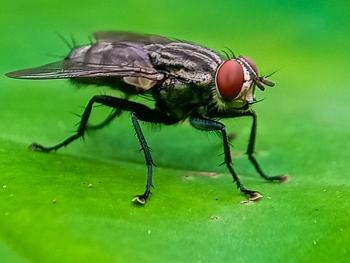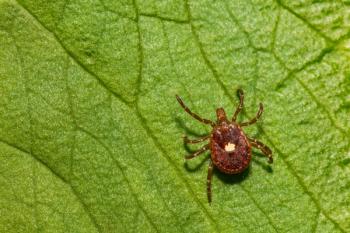
My chickens are in the car--parasites in urban livestock (Proceedings)
Traditional livestock species are becoming more popular in suburban and semi-rural areas where small animal clients may own several acres of land and in municipalities that are becoming more lenient with restrictions on livestock and poultry.
Traditional livestock species are becoming more popular in suburban and semi-rural areas where small animal clients may own several acres of land and in municipalities that are becoming more lenient with restrictions on livestock and poultry. There are often no food animal practitioners in these area and equine veterinarians may not be interested in these other species. As a result, small animal practitioners may find themselves faced with animals they haven't thought about since vet school.
Small ruminants and camelids
Sheep, goats, llamas and alpacas lend themselves well to small acreages provided owners can prevent coyote and dog attacks. The principal disease problem faced by sheep and goat owners in much of the U.S. is gastrointestinal nematodiasis, especially disease caused by the strongylid nematode Haemonchus contortus. In the eastern and Midwestern U.S. an anemic sheep or goat during the grazing season has hemonchosis until proven otherwise. In the western U.S., H. contortus can be a problem in irrigated areas, but in arid areas it is not as successful and in the Northwest other members of the same family of parasites predominate and diarrhea would be a more common clinical sign. Haemonchus is an enormous problem and causes significant disease and death in small ruminants, not because there are no effective drugs available, but because overuse of drugs has led to high levels of resistance in Haemonchus and related trichostrongyle nematodes.
While problems caused by these parasites are less in the western states and drug use has been less intensive, any small ruminants or camelids purchased from the east probably bring at least some drug resistant worms with them. Consequently, you might be faced with an animal with severe anemia and/or diarrhea that has a history of having been dewormed.
Diagnosis of disease cannot be made from detection of strongylid type eggs in a fecal sample since all animals would be expected to have some level of infection. If anthelmintic resistance is a possibility, the best option would be deworming the animal with 2 drugs from different pharmacologic groups (for example, ivermectin and fenbendazole). Goats require higher doses of anthelmintics than sheep (see Table 1). Use of dewormers in food animal species requires adequate withdrawal periods for milk and meat products. In suburban small farms meat withholding is commonly not a major concern, but some owners may be drinking milk from their dairy goats. Note that for dairy goats, morantel is approved with no milk withdrawal. In dairy cows, fenbendazole has no withdrawal time for milk. In general, llamas and alpacas are given higher doses of dewormers based on practitioner experience. None of the dewormers are specifically approved for use in camelids. All of the products listed below are available over the counter or in farm supply stores or on line. In the Northwest, Fasciola hepatica may cause chronic poor condition in small ruminants and camelids. Albendazole can used for treatment of this parasite.
Another common cause of diarrhea in small ruminants and camelids, especially young animals, is coccidiosis. Like coccidia species of small animals, those in livestock are highly host specific. Oocysts are found in the feces of virtually all animals so detecting oocysts on a standard fecal flotation is not sufficient for making a diagnosis of coccidiosis. In general, coccidiosis tends to be a clinical diagnosis and, as in small animals, it seems to occur most often following stressful events in young animals such as weaning or diet or other environmental change. The disease is uncommon in adults, which are immune even though oocysts are found in manure. Drugs used for treatment of coccidiosis are sulfadimethoxine (75 mg.kg bw orally 4-5 days) and other sulfa antibacterials, and amprolium (10 mg/kg orally 3-5 days in sheep and 50 mg/kg orally for 5 days in goats).
Table 1. Selected anthelmintics for treatment of gi nematodes
Drug
Group
Sheep Dose
Goat Dose
Camelid Dose-not FDA approved
ivermectin
Macrolide
0.2 mg/kg orally
0.4 mg/kg orally
not FDA approved
0.2 -.4 mg/kg orally
moxidectin
macrolide
0.2 mg/kg orally
0.4 mg/kg orally not FDA approved
0.2 mg/kg orally
fenbendazole
benzimidazole
5 mg/kg orally
not FDA approved
10 mg/kg orally
10-20 mg/kg orally 3-5 days
albendazole
benzimidazole
7.5 mg/kg
20 mg/kg orally
not FDA approved
10 mg/kg orally
levamisole
“nicotinic”
8 mg/kg orally
11 mg/kg orally
not FDA approved
5-8 mg/kg orally
morantel
“nicotinic”
10 mg/kg, approved for lactating goats
Chickens and other poultry
The most common parasitic disease that would produce severe disease or death in backyard poultry is coccidiosis. Each avian host has its own species of Eimeria that vary in pathogenicity. Young, nonimmune birds are at most risk of developing severe disease. Fecal samples from young birds almost always show the presence of coccidia occysts, making accurate diagnosis of disease difficult. The diagnosis of coccidiosis is confirmed with necropsy. Depending on the species of coccidia causing disease, birds may present with poor condition, diarrhea that may contain blood, inappetance, depression and death. Common treatments for backyard flocks are sulfamethazine and amprolium. Owners should be advised to limit oocyst contamination of the environment by eliminating damp or wet areas and using good sanitation.
The most common helminths of chickens and other poultry are ascarids. Ascaridia spp are typical ascarids found in the small intestine. Heterakis is a cecal parasite that can act as a vector for the protozoan parasite, Histomonas melagridis, the cause of blackhead in turkeys. The eggs of Ascaridia and Heterakis are similar. Like other ascarid eggs, they have a thick shell with a single cell inside when passed in the feces, but they lack the rough outer layer seen in Toxocara. Piperazine, which can be added to water or used to treat animals individually, is available in farm supply stores but is not approved for use in birds producing eggs for human consumption. Other dewormers used in mammals can also be used in birds, but are not approved for birds producing eggs for human consumption.
Poultry may also become anemic and depressed because of heavy infestations of external parasites. The bird mites Ornithonysuss and Dermanyssus can produce serious loss of condition and reduced egg production. Ornithonyssus is a permanent ectoparasite, but Dermanyssus only visits birds at night to feed and spends the rest of its time in the environment. Mites can be found during the day in areas where the birds roost. Ornithonyssus does not leave the host and can be found on the bird, especially in the vent area. Pyrethroid sprays are often used for treatment of these mites and are also effective against lice, which are common on birds. If birds are producing eggs for human consumption, systemic products should not be used.
Pigs
Pot-bellied pigs have been quite popular as pets for some time and, if house pets, can be kept as free of parasites as dogs and cats. Pigs that are kept outside as livestock animals will have greater exposure to parasites. Pigs are less likely than small ruminants and poultry to be presented for serious or life-threatening parasitic disease. Ascaris suum is the most common helminth of pigs and is likely to be present in young animals coming from any type of farm management system.
Heavy infections can be associated with pneumonia from larval migration and failure to gain weight. Probably more importantly, however, Ascaris suum is a zoonotic parasite. The swine ascarid is very closely related to the human ascarid, A. lumbricoides, and patent infections of A. suum may develop in children exposed to infective eggs. Ingestion of large numbers of infective eggs can also produce verminous pneumonia, even if adult worm infections do not develop. Like other ascarids, A. suum has eggs that are very long-lived in the environment so control of the parasite in the animal is important in preventing environmental contamination. Several readily available anthelmintics can be used to treat Ascaris and other intestinal nematodes.
Pigs are also frequently infested with two external parasites: Hematopinus suis, the sucking louse, and Sarcoptes scabiei var. suis. The sucking louse is one of the largest species of lice and is sometimes mistaken for a flea. It is usually readily visible on the skin of pigs. Sarcoptic mange is diagnosed by skin scraping. Both these parasites can cause scratching and alopecia. They are most easily treated with macrolide injections. As with other food animals, all meat withdrawal times must be observed if the animal is intended for food production.
Table 2
Drug
Group
Dose
ivermectin
macrolide
0.3 mg/kg SubQ
doramectin
macrolide
0.3 mg/kg SubQ
fenbendazole
benzimidazole
9 mg/kg orally
levamisole
“nicotinic”
8 mg/kg orally
Selected dewormers for use in pigs (macrolides also for Sarcoptes, lice)
References
Bowman DD. 2009. Parasitology for Veterinarians, 9th Ed., Saunders Elsevier. St Louis, MO.
Southern Consortium for Small Ruminant Parasite Control.
Zajac, AM. 2006. Gastrointestinal nematodes of small ruminants: life cycle, anthelmintics, and diagnosis. 2006. Vet Clin Food Anim. 22:529-541.
Newsletter
From exam room tips to practice management insights, get trusted veterinary news delivered straight to your inbox—subscribe to dvm360.



